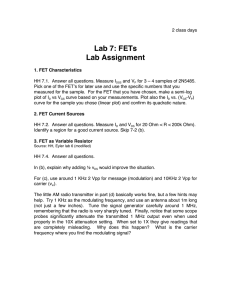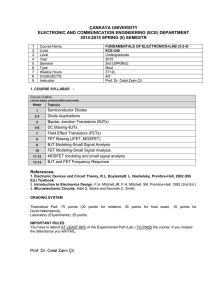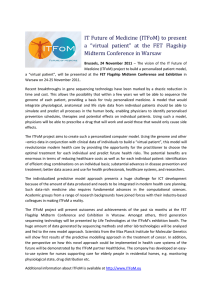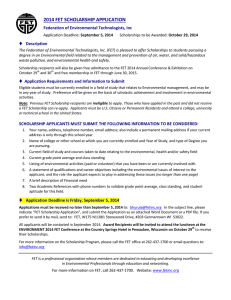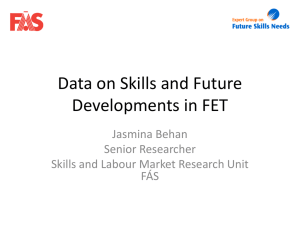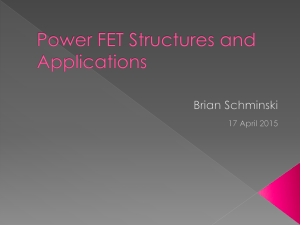DOC - Europa
advertisement
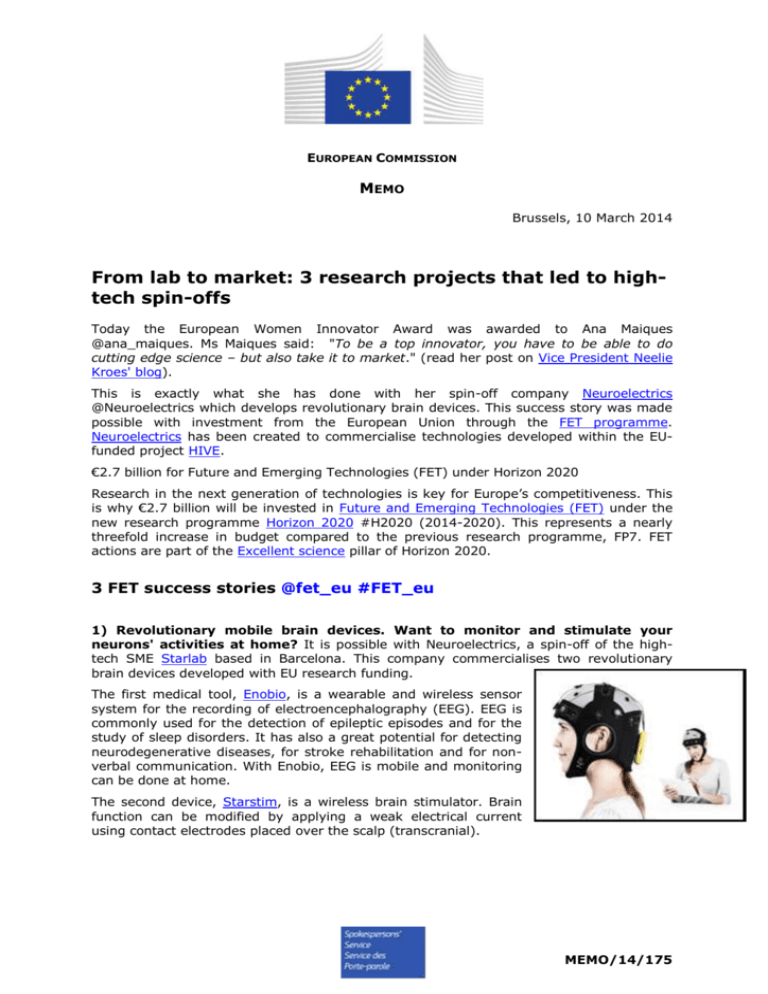
EUROPEAN COMMISSION MEMO Brussels, 10 March 2014 From lab to market: 3 research projects that led to hightech spin-offs Today the European Women Innovator Award was awarded to Ana Maiques @ana_maiques. Ms Maiques said: "To be a top innovator, you have to be able to do cutting edge science – but also take it to market." (read her post on Vice President Neelie Kroes' blog). This is exactly what she has done with her spin-off company Neuroelectrics @Neuroelectrics which develops revolutionary brain devices. This success story was made possible with investment from the European Union through the FET programme. Neuroelectrics has been created to commercialise technologies developed within the EUfunded project HIVE. €2.7 billion for Future and Emerging Technologies (FET) under Horizon 2020 Research in the next generation of technologies is key for Europe’s competitiveness. This is why €2.7 billion will be invested in Future and Emerging Technologies (FET) under the new research programme Horizon 2020 #H2020 (2014-2020). This represents a nearly threefold increase in budget compared to the previous research programme, FP7. FET actions are part of the Excellent science pillar of Horizon 2020. 3 FET success stories @fet_eu #FET_eu 1) Revolutionary mobile brain devices. Want to monitor and stimulate your neurons' activities at home? It is possible with Neuroelectrics, a spin-off of the hightech SME Starlab based in Barcelona. This company commercialises two revolutionary brain devices developed with EU research funding. The first medical tool, Enobio, is a wearable and wireless sensor system for the recording of electroencephalography (EEG). EEG is commonly used for the detection of epileptic episodes and for the study of sleep disorders. It has also a great potential for detecting neurodegenerative diseases, for stroke rehabilitation and for nonverbal communication. With Enobio, EEG is mobile and monitoring can be done at home. The second device, Starstim, is a wireless brain stimulator. Brain function can be modified by applying a weak electrical current using contact electrodes placed over the scalp (transcranial). MEMO/14/175 This stimulation can relieve pain (migraine headache, multiple sclerosis pain, fibromyalgia, etc) and could be used for depression treatment, post stroke rehabilitation and cognitive enhancement. Data recorded by the two products is directly available on a computer via a wireless connection. These new brain technologies were designed, developed and tested within the project HIVE. €2.3 million of EU funding was invested in this project to advance state-of-the-art in fundamental neuroscience research, neurology diagnosis and therapy. On top of groundbreaking medical progress, the project led to the creation of the promising spin-off Neuroelectrics, which is going international with a branch in the USA. 2) A smartphone app for crowd safety. Imagine that you are at a festival: there is a mass panic, where should you go to be safe? There is an app to tell you. The system has already been tested during the Olympic Games 2012 in London (City of London Police app), the Vienna City Marathon in 2012 (crowd density visualisation video – picture below) and, more recently, the investiture of Prince Willem Alexander in 2013 in Amsterdam (30 APPril app) that was used by more than 70 000 people. The app – which is adapted for each event – allows users to receive updated information on the best way to go to a specific place and, at the same time and with their prior approval, to send data on their movements to the organisers. The event emergency team can then be informed in real time about the crowd behaviours and its density. In case of a dangerous situation, messages are sent to users to coordinate their movements. Research leading to the app was carried out within the SOCIONICAL project, which was awarded €5.3 million of EU funding. The general vision of the project was to develop an understanding of how complex systems of interconnected electronic devices and humans interact, and how this leads to an intelligent, useful behaviour. The project crossed the boundaries between different scientific disciplines (physics, computer science, mathematics, social sciences and even humanities), addressing modelling techniques, simulation experiments and analytical methods. SOCIONICAL resulted in the creation of a spin-off based in Germany, SIS Software, which commercialises social information solutions. The team started with emergency management and events, and wants to expand the concept to tourism and marketing. Read this interview of Paul Lukowicz, coordinator of SOCIONICAL and scientific advisor at SIS Software. 2 3) Virtual characters with human facial emotions. Fancy slipping into the role of your favourite 3D character and control its facial expressions with your own? Do it with Faceshift @faceshift. This spin-off has developed the first facial tracking technology that allows users to animate virtual avatars by moving their own face in front of a camera. The software is used for TV and movie production, commercials and video games. The team, which has a strong academic and international background, believes that technology should enable creativity, that it should be at the same time simple and powerful, and that it should be accessible to everyone. Faceshift technology is based on the results of the TANGO project, which received €2.8 million of EU funding. While motion synthesis techniques mainly focus on physical factors, TANGO explored the universe of non-verbal emotional interactions. Emotional interactions were studied quantitatively in detail and were transferred in technical systems simulating realistic emotional interactive behaviour. The obtained experimental results and mathematical analysis led to a new generation of technical devices establishing emotional communication between humans and machines. Watch their video Discover other FP7 FET projects Interested in applying? Participant portal Contacts Email: comm-kroes@ec.europa.eu Tel: +32.229.57361 Twitter: @RyanHeathEU 3

